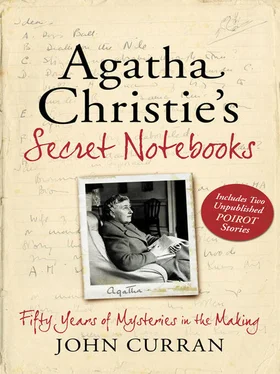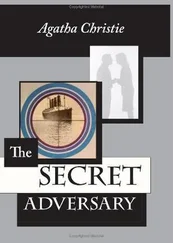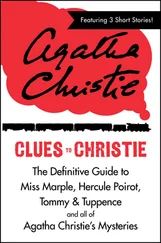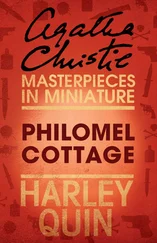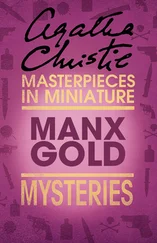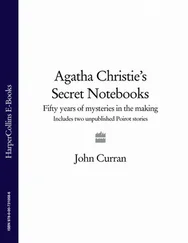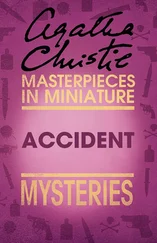Appearing together on just one page of Notebook 43, the following would have been added when the plot was well advanced. With the exception of Point B, all these occur in Chapters 13 and 14:
Points to be worked in
A. Mrs Upward sees photo—familiar
B. Mrs Rendell came down to see Mrs Upward that night—couldn’t make her hear
C. Maureen talks about being adopted
D. Mrs O sums up Maureen’s age and appearance
E. Mrs Rendell asks P about anonymous letters—untrue
F. Poirot told by Mrs O—it was Dr Rendell
In particular, Point C is the main clue that incriminates the killer—although few readers will notice it, so subtly is it inserted. And Point A sets up the second murder in Broadhinny as Mrs Upward plays a very dangerous game with Poirot.
Ordeal by Innocence 3 November 1958
Jacko Argyle died in prison while serving a sentence for the murder of his stepmother. His assertion that he had an alibi for the fatal night was never substantiated—until now. Arthur Calgary arrives at the family home and confirms Jacko’s alibi. This means that the real killer is still living among the family and is ready to kill again.
Notebook 28 contains all of the notes for this novel, amounting to almost 40 pages. On 1 October 1957 Agatha Christie wrote to Edmund Cork, asking him to check on the legal situation if person A were to be tried and convicted of the murder of his stepmother despite his claim that he was with person B at the crucial time of the killing. Person B is never found and A dies in prison six months into his incarceration. Then B, who has been abroad for a year, turns up and approaches the police to confirm A’s story and provide the alibi. Christie wanted clarification on the situation with regard to a ‘free pardon’ and the possible reopening of the case. She assured Cork that an early reply would enable her to get to work ‘industriously on this projected new book’. The date ‘Oct 6th’ appears on page 20 of Notebook 28, confirming that the novel was planned and written the year before publication.
‘This is easily the best non-branded [Poirot or Marple] Christie we have had for some time… The Innocent [as it was then called] is close to achieving a successful blend of the classical detective story and the modern conception of a crime novel.’ This was the enthusiastic verdict on 1 May 1958 when Collins received the latest Christie. The reader considered that it could benefit from cutting and mentioned that Agatha Christie proposed to do that. His other reservation was about the title and he suggested some alternatives—‘Viper’s Point’, ‘A Serpent’s Tooth’, ‘The Burden of Innocence’ and, prophetically, ‘Cat among the Pigeons’. Although no one knew it at the time, this was to be the title of the following year’s book.
The short story ‘Sing a Song of Sixpence’ (see Chapter 4), collected in The Listerdale Mystery, contains distinct similarities to this novel. As in the short story, an outside investigator arrives at the home of the murder victim, whose relatives are mutually suspicious, and discovers that the killer is a young man with an emotional connection to the elderly family retainer. Change the ‘son’ of the short story to ‘lover’ and the similarities to Kirsten Lindstrom and Jacko in Ordeal by Innocence, where Arthur Calgary arrives at the Argyle household, are striking. Although the story first appeared in December 1929, almost 30 years earlier, the parallels to Ordeal by Innocence are too many to be mere coincidence—the outsider detective, the elderly matriarch bludgeoned to death for money, the gnawing suspicion and distrust, the eventual disclosure of an unsuspected emotional and criminal partnership.
Ordeal by Innocence remains one of the best of the latter-day Christies. It is a crime novel, as distinct from a classical detective story, with deeply held convictions about truth and justice, guilt and innocence. It is marred only by the inclusion, in the last 20 pages, of two perfunctory crimes, a successful and an attempted murder. Coming, as they do, so near the end of the novel, they do not convince either as an illustration of the killer’s panic or
With her customary ingenuity, Agatha Christie resolved the thorny question of legal justice and moral justice. When Ordeal by Innocence was written, many aspects of life were more clear cut than they have subsequently become. If a character in a Christie novel were unmasked as a murderer, the reader could be sure that he or she would pay the ultimate price. With the death in prison of Jacko while serving a sentence for a crime he did not commit, Christie could be accused of a disservice to both natural and legal justice. Fifteen years earlier in Five Little Pigs, Caroline Crale is wrongly convicted, but it is with her own collusion in expiation for an earlier misdemeanour. Again, she dies in prison. And in Mrs McGinty’s Dead (1952) the unsympathetic James Bentley is also wrongly convicted but is saved by Poirot before his execution. But in Ordeal by Innocence Jacko is finally shown to have been morally responsible, even if his was not the hand that struck the fatal blow.
as a suspense-building exercise; the Notebooks, however, give some insight into the inclusion of these murders.
The opening of the novel follows exactly the earliest jottings in Notebook 28, even to the amount of the fare paid to the boatman. The ferry used by Arthur Calgary is the one that still runs to this day at the end of Greenway Road just past the imposing gates of Dame Agatha’s summer residence.
Arthur Calgary—Crossing ferry—begins
The ferry came to a grinding halt against the shelving pebbles—A.C. paid fourpence and stepped ashore
Well, this was it—he could still, he supposed, turn back etc
An early page of Notebook 28 gets straight to the crime. This remains largely the same except for the detail of a poker instead of a sandbag. At this stage the character Jacko that appears in the book is still appearing in the Notebook as Albert:
Violent quarrel between Albert and Mrs A—he attacks her—she is nearly dead—K. sends him off to obtain an alibi. At 8 o’clock—with her again and kills her or he sticks her with a knife—she gets up—tells about him.
Possible course of real events—
Albert—determined to get money out of Mrs. Argyle makes up to Lindstrom—wants her to marry him—she agrees—Mrs. A—won’t help—Leo won’t help—he works on her—the sandbag from under the door—at 8.15 a form she does not understand—Mrs A bends over it—K socks her
The family members underwent name changes but are still recognisable, while Mr Argyle, Kirsten and Maureen are substantially the same as the finished novel. The calculation of Tina’s age shows that these notes were written in 1958:
Tina half-caste girl—(5 in 1940—23 now) married to local postman? Builder’s mason? farmer
Linda—married to a man since paralysed—she lives there [Mary]
Johnnie—a job in Plymouth comes over quite often
Albert—bad lot—unstable hanged convicted of murder of Mrs. Argyll [Jacko]
Mr Argyll—a scholar
Mr Argyle—(or Mr Randolph) Randolph Argyle? Ambrose Randolph?
Thin—ethereal—surrounded by books
Kirsten?
Her homely face—pancake flat—nose surrounded by bleached permanent w hair
How much better a nun’s coif and wimple?—not a contemplative lay sister—the kind who inspected you through a grille before admitting you to the visitor’s parlour—or Mother Superior’s presence
Calgary goes and sees—Maureen—(married to him?)—Silly common little girl—but shrewd—went to family when he was arrested—they didn’t know she he was married.
Читать дальше
Конец ознакомительного отрывка
Купить книгу
